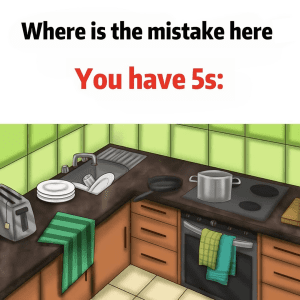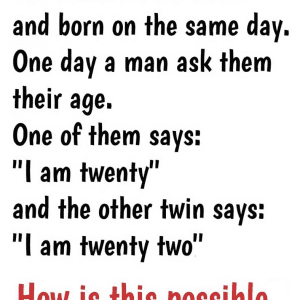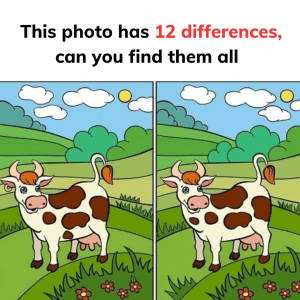Imagine yourself in a scene filled with innocent faces—yet among them, a thief lurks. Who could it be? At first glance, the answer may seem obvious, but don’t let appearances fool you. This puzzle challenges you to look closer, think critically, and uncover the hidden clues that reveal the true culprit. Ready to put your detective skills to the test? Let’s dive in and see if you can figure out who the thief really is.
Who Is the Thief? Analyzing the Scene

In this brain-teasing puzzle, you’re presented with three people, each seemingly blending into the crowd. But one of them is hiding a secret. The challenge is simple in concept yet tricky in practice: use your powers of observation to determine which person is the thief. Each individual might look innocent, but subtle clues can help you pinpoint the guilty party.
Common Mistakes People Make in Puzzles Like This
Before diving in, let’s talk about the common mistakes people often make with puzzles like these. Many jump to conclusions, assuming that the most obvious detail is the solution. Often, this leads to incorrect assumptions based on appearances or stereotypes.
For instance, some might suspect a particular person because of their attire or body language that seems “off,” without digging deeper. This type of puzzle plays on those tendencies, encouraging us to look beyond the surface. The real trick? Focusing on subtle, easy-to-miss details that truly tell the story. So, keep an open mind as we analyze the clues.
Step-by-Step Guide to Solving the Puzzle
Step 1: Observe the Weather and Clothing
The first clue is all about context. Notice the clothing choices of each person in the scene. It’s a warm day, as indicated by the light attire of everyone except one individual—the woman labeled as #1. She’s wearing a heavy fur coat, which stands out in contrast to the warm-weather attire of the others. Now, ask yourself: why would someone wear such a bulky, warm coat on a hot day?
One possible reason could be that she’s trying to conceal something beneath the coat. This choice of clothing, unusual for the setting, is a significant clue that points toward her trying to hide stolen goods. A large coat can serve as the perfect cover, allowing someone to walk away undetected.
Step 2: Pay Attention to Behavior and Body Language
Next, focus on how each person is carrying themselves. Body language can be a subtle but telling indicator of guilt. The woman in the coat is standing with her hands in her pockets. Why might she be doing this? Perhaps it’s an attempt to hold the coat closed or keep her hands steady due to nerves. This posture suggests a possible need to keep something hidden from view.
Meanwhile, the other individuals display relaxed and natural body language, consistent with the casual setting. The woman in the heavy coat, however, appears more guarded, further supporting the theory that she’s hiding something. Her actions and attire together begin to create a clearer picture of the true culprit.
Step 3: Look for Contradictions
Another essential step in identifying the thief is spotting contradictions within the scene. Think about the logic: If everyone else is dressed for warm weather, why would one person dress so out of place? A fur coat on a hot day contradicts the setting, raising immediate red flags.
By examining the whole picture, these contradictions become more apparent. The woman in the coat stands out for all the wrong reasons—her outfit choice simply doesn’t match the rest of the scene, pointing to something amiss.
Step 4: The Final Reveal
Piecing together these clues leads us to one conclusion: the woman in the heavy coat is the thief. Her unusual choice of attire, coupled with her cautious body language, signals that she’s hiding stolen items under her coat. This kind of subtle observation reveals what’s often overlooked at first glance.
So, the thief is person #1—the woman in the coat.

Why This Puzzle Challenges Your Assumptions
Puzzles like these are more than just fun games; they push us to think critically and avoid snap judgments. They test our ability to spot inconsistencies and examine the finer details, even when our first instinct might lead us astray. In this puzzle, it’s easy to suspect the obvious or jump to conclusions based on stereotypes. But the real answer lies in the careful observation of the scene and connecting the dots logically.
The lesson here? Don’t judge based on appearances alone. Small details often tell the real story, especially when something seems just a bit “off.”
How Puzzles Improve Observation Skills
If you enjoyed cracking this mystery, know that solving such puzzles is an excellent way to sharpen your observation skills. Puzzles challenge our brain to go beyond surface-level details and engage in critical thinking. They teach us to focus on subtle cues, notice inconsistencies, and find hidden meanings—all valuable skills, both in problem-solving and in everyday life.
Puzzles like these can be incredibly beneficial for mental agility. They encourage us to think creatively, ask questions, and approach problems from new angles. Whether it’s spotting the thief in a crowd or piecing together a complex riddle, these exercises are great for honing logical thinking and enhancing attention to detail.
Conclusion: Embrace the Power of Perception
The journey to solving this puzzle teaches us an important lesson: the power of perception. Our instincts might lead us one way, but a closer examination often uncovers hidden truths. By looking beyond the obvious and questioning what doesn’t seem right, we develop a sharper eye for detail and a keener sense of logic.
Did you solve the mystery before reaching the answer? If so, well done! If not, don’t worry—puzzles like these are all about practice. The more you engage with them, the more skilled you’ll become at spotting those subtle clues. So, keep challenging yourself with these fun exercises, and remember: sometimes, the answer is hiding in plain sight, waiting for you to find it.


